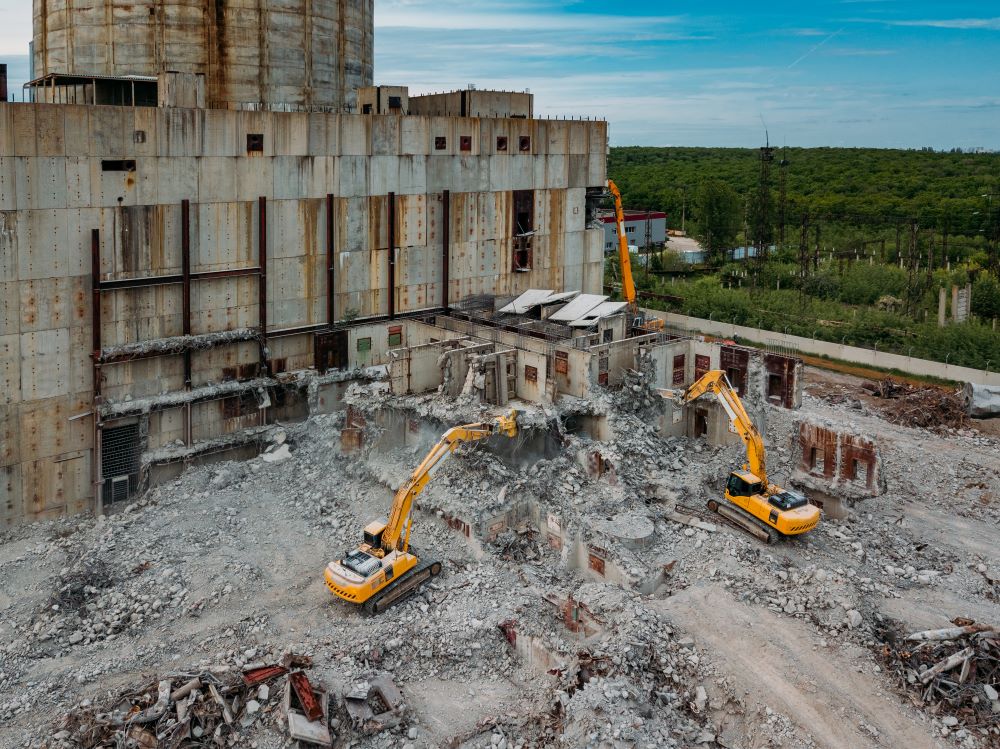
Industrial Demolition Trends That Are Changing the Game
The industrial demolition industry is changing quickly. The techniques used to demolish old buildings change as cities expand and change. The days of demolition being a straightforward wrecking ball task are long gone. Sustainable practices and cutting-edge technology are currently changing the face of this crucial sector. Anyone working in construction or real estate has to be aware of these industrial demolition trends because of the growing emphasis on urban development and environmental responsibility.
Let’s examine the innovative developments that are improving safety while also encouraging sustainability and efficiency in demolitions across a range of industries. These trends will provide you with important information about what the future holds for industrial demolition, whether you’re an architect, contractor, or just interested in the ways our built environment is evolving.
OUR SERVICES
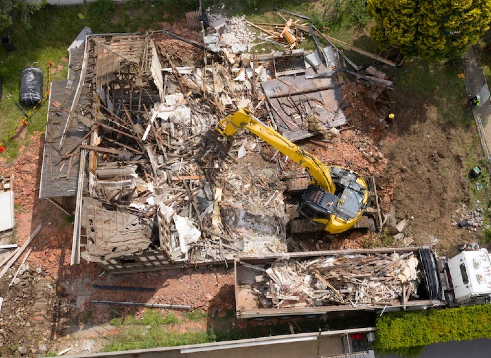
Structure Demolition. Residential, Commercial & Industrial
If your structure poses a health, safety, or environmental risk, demolition can prevent costly citations or fatal accidents. While this may seem daunting, you are just a phone call away from having your residential demolition done professionally, responsibly, and at a great price.
Talk to a Demolition Specialist Now! 916.249.5001
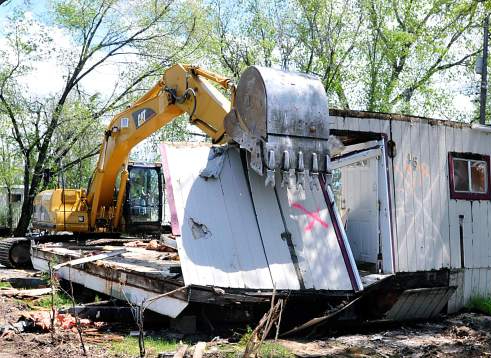
Mobile Home Demolition
We demolish and haul away mobile homes. Any size, anywhere, anyhow. We are fast, clean and competitive. We serve most of Northern California. There are many factors to consider when removing or demolishing your old trailer, mobile home, or manufactured home like: the processes involved, costs, time, contractors, debris, and permits.
Talk to a Demolition Specialist Now! 916.249.5001
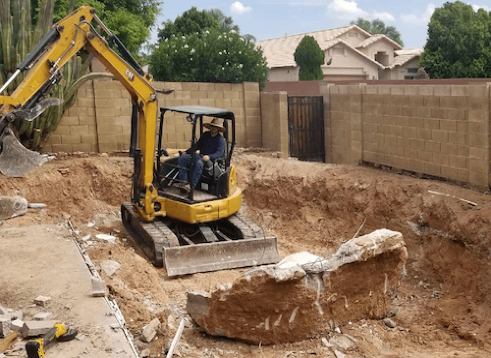
Pool Demolition
When removing a pool in Sacramento, California with the professional demolition team of Maxton Demo, you’re guaranteed peace of mind from beginning to end. From your initial request for an estimate to clean-up, you can expect our pool demolition process that’s completely professional and safe.
Talk to a Demolition Specialist Now! 916.249.5001
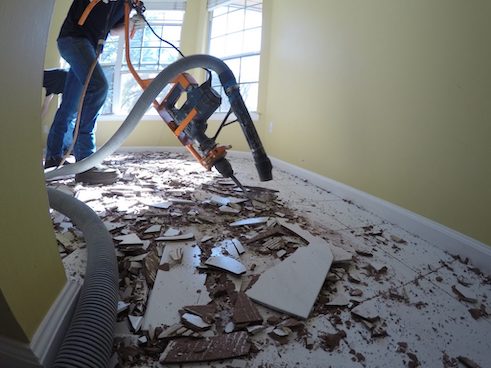
Floor Demolition
Flooring demolition, like any other major home renovation work, requires a specific set of skills and tools to be performed properly. You need experts in flooring demolition to get you the best floors possible. Contact us to find out more about how we can help you today.
Talk to a Demolition Specialist Now! 916.249.5001
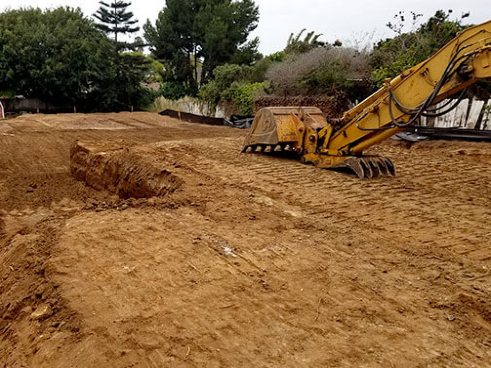
Grading & Excavating
If you need an experienced excavator and grader in Sacramento, call us today. One of the many reasons that residential, commercial, and industrial customers choose to work with us is because we’re able to provide a broad range of services to help construction-related projects get done in less time and at a reduced cost.
Talk to a Demolition Specialist Now! 916.249.5001

Roof Snow Removal
Heavy snow & ice dams can cause significant roof and home damage. Roof Snow removal is our specialty during the winter months. Serving the Sacramento, California area for 10 years, we can get your roof snow removed and promise a quick response and reasonable rates.
Talk to a Demolition Specialist Now! 916.249.5001
The Development of Eco-Friendly Demolition Techniques
As people become more conscious of their environmental obligations, sustainable demolition techniques are becoming more popular. Greener practices are being adopted by contractors as rules tighten and public sentiment changes.
Deconstruction, as opposed to conventional destruction, is one strategy. Using this technique, buildings are meticulously disassembled to recover reusable components, including metal, wood, and fittings. Waste is greatly decreased as a result.
Furthermore, recycling is now a crucial step in the process. Sorting waste on-site has become a top priority for many businesses in an effort to keep as much of it out of landfills as possible. Crushed concrete may be used for roads or new buildings.
Sustainability initiatives also benefit from innovative technology. During demolition operations, advanced equipment lowers emissions and noise pollution. Adopting these practices improves a company’s standing in the industry in addition to helping the environment.
Customers are looking more and more for businesses that are dedicated to eco-friendly solutions that don’t sacrifice productivity.
Using Technology to Make Demolitions Safer and More Effective
The landscape of industrial demolition is changing due to technology. Safety procedures on construction sites are being improved by cutting-edge equipment and creative tools.
Nowadays, site inspections are often conducted using drones. With the help of their real-time aerial pictures, project managers can see potential dangers before construction even starts. By being proactive, hazards are greatly reduced.
Additionally, robotic equipment has joined the scene. These devices can do hazardous jobs, lowering the risk of mishaps for people. Their accuracy guarantees that demolitions are carried out skillfully, avoiding accidental harm.
Software solutions also make project management easier. They help with scheduling, planning, and resource allocation, which improves overall process efficiency.
Before demolitions are carried out, teams may see them via the use of virtual reality (VR). This insight helps in planning time- and resource-saving strategies while guaranteeing that safety precautions always come first.
The influence of technology on industrial demolition methods across the sector will change as it develops further.
Urbanization’s Effect on Demolition Techniques
The industrial demolition environment is changing as a result of urbanization. More buildings must be demolished to make room for new construction as cities grow. This tendency necessitates creative demolition techniques.
Traditional procedures may no longer be adequate in metropolitan situations that are often crowded. Precision methods that reduce disturbance are becoming more and more popular among demolition businesses. Selective dismantling and controlled demolitions are growing in popularity.
Regulations pertaining to dust and noise also have a significant influence on these approaches. Strategies that prevent disruptions while upholding safety requirements are necessary in metropolitan environments.
Working along with local authorities has also become crucial. Involving community stakeholders improves public acceptability and ensures that initiatives are in line with urban planning objectives.
The strain on the current infrastructure increases with population growth. In quickly changing urban environments, demolition techniques must change to satisfy social and environmental demands.
The Increasing Need for Green Demolition Initiatives
Demolition is not an exception to the notable trend in the building sector toward sustainability. Green demolition initiatives are becoming more and more popular as environmental consciousness increases.
The goal of green demolition is to maximize resource recovery and reduce waste throughout the disassembly process. This strategy encourages material recycling and reuse in addition to lowering landfill inputs.
Eco-friendly techniques are becoming more and more important to clients. They look for contractors that follow corporate responsibility objectives and use sustainable practices.
By using cutting-edge methods like deconstruction rather than conventional wrecking, buildings’ useful components may be salvaged, prolonging their life cycle beyond first usage.
Additionally, technological advancements that enable effective on-site sorting and processing of recyclable materials assist this trend by further simplifying operations and improving environmental results.
Adopting green demolition will be essential to future-proofing the sector as cities grow and waste management laws become more stringent.
New Rules and Guidelines for the Demolition Sector
The demolition sector has experienced a rise in new rules and guidelines in recent years. Safety, environmental preservation, and public health are top priorities for governments everywhere.
Before starting a demolition job, these modifications often need careful evaluations. Businesses are now required to carry out thorough assessments for dangerous substances like lead paint or asbestos. By being proactive, dangers that might jeopardize employees or local inhabitants are reduced.
Furthermore, more stringent waste management guidelines are being developed. Instead of disposing of their waste in landfills, demolition companies are urged to recycle as much of their stuff as they can. This change satisfies the increasing demand for green initiatives while also adhering to environmental principles.
Maintaining compliance has become crucial for industry participants as requirements change. Adopting these modifications may improve a company’s image while guaranteeing safer demolitions that are advantageous to all parties.
New Methods for Industrial Demolition
The field of building and deconstruction is changing as a result of innovative industrial demolition methods. Robotic demolition is one noteworthy method. Because they can maneuver through confined locations, these devices lower the danger involved in physical work.
Furthermore, the accuracy of controlled explosives is making them more and more popular. They make it possible to carry out targeted demolitions with the least amount of collateral damage to nearby buildings. This method improves safety and saves time.
The use of drones for site evaluations is another revolutionary development. They provide important insights into building problems without endangering workers by taking overhead imagery.
Additionally, water jet cutting has become a more hygienic substitute for conventional techniques. It keeps the structure intact till the very end while drastically lowering dust and debris.
These cutting-edge methods open the door for safer and more effective industrial demolition procedures in a variety of projects as they develop further.
Future Implications of These Industrial Demolition Trends
The industrial demolition scene is changing quickly. It is evident that the industry is shifting to satisfy contemporary needs as we dig further into sustainable practices, cutting-edge technology, and evolving metropolitan surroundings. In addition to addressing environmental issues, the move to green demolition complies with growing safety and sustainability laws.
In order to increase productivity and lower dangers during demolitions, technology is still essential. Traditional approaches are being transformed by modern technology, robots, and drones. These instruments guarantee more accuracy in execution in addition to streamlining procedures.
The demolition industry has both possibilities and problems as a result of urbanization. There is a pressing need for efficient techniques that put safety first while allowing for new constructions since cities are expanding vertically rather than horizontally.
Stakeholders must remain up to date on new developments in industrial demolition as we go. Adopting sustainable practices can help our environment and communities in addition to providing companies with financial advantages. Keeping up with these developments puts businesses in a leadership position, prepared to take on any challenges that may arise in an ever-changing sector.
Data-Driven Tactics, Robots, And Artificial Intelligence For Environmentally Friendly Industrial Demolition Sites
As companies change and work to reduce their environmental impact, sustainable industrial demolition is becoming an increasingly important area of concern. The demand for environmentally friendly demolition techniques has never been greater at a time when environmental issues are of utmost importance. Conventional techniques often produce a great deal of waste and pollution, but new technologies are opening the door to change.
It’s evident that advancements are being made as we investigate how robots, artificial intelligence, and data-driven tactics change the environment of industrial demolition sites. These developments not only increase productivity but also encourage sustainability, which is advantageous for both the environment and enterprises. Come explore this fascinating nexus between nature and technology and discover what happens when cutting-edge solutions are applied to long-standing problems.
Robotics and AI’s Place in Demolition
Industrial demolition is undergoing a transformation thanks to AI and robots. Traditional approaches often lack the accuracy and efficiency that these technologies provide. They lower the dangers involved with manual labor by automating labor-intensive and dangerous jobs, which has a major positive impact on workers’ health and safety.
Complex settings may be navigated by robotic robots, which can safely enter confined locations that are inaccessible to human workers. This feature lowers the dangers connected to unstable constructions or dangerous materials. Robots may make high-resolution digital maps of the site with the use of 3D mapping technology, which enables them to identify the safest and most effective paths to travel.
Data is analyzed by AI systems to enhance demolition timetables. They ensure that projects remain on schedule and under budget by anticipating any problems before they materialize. The optimum locations and safest methods for demolition are determined with the aid of 3D modeling. By using this technique, demolition crews may dismantle a structure from the top down, reducing the possibility of structural instability.
Additionally, AI-powered drones swiftly collect vital information during site assessments. By enabling teams to see developments in real time, this improves planning stages. Drone data and other site information are combined with 3D modeling software to produce intricate maps that demonstrate the structural soundness of the project. Additionally, this technology assists in identifying concealed dangers that could need particular care, like asbestos.
As these technologies advance, they reduce waste and encourage safer working conditions. In addition to streamlining operations, the combination of AI and robots promotes environmentally friendly business practices.
Data-Driven Strategies’ Advantages for Demolition Sites
Industrial demolition is being revolutionized by data-driven tactics. By offering practical analytics-based insights, they improve decision-making. With the use of 3D modeling software, teams may more precisely plan and carry out projects by combining data from many sources to produce precise digital maps.
Teams can easily detect hazardous chemicals and evaluate structural integrity by utilizing real-time data. This lowers worker dangers and guarantees adherence to safety rules. By simulating demolition situations using 3D modeling software, teams may prepare for possible obstacles and modify their strategy appropriately.
Additionally, predictive analytics is essential. It enables businesses to foresee possible obstacles before they materialize, resulting in more seamless project execution. By simulating demolition situations using 3D modeling software, teams may prepare for possible obstacles and modify their strategy appropriately. Additionally, this technology reduces waste and promotes sustainability by assisting teams in identifying the most effective demolition techniques.
These tactics also make resource management more efficient. Businesses may reduce waste and maximize expenses by more effectively allocating staff and equipment by examining past initiatives. Teams may find reusable materials with the use of 3D modeling software, which lessens the demand for fresh resources.
Another important advantage is the influence on the environment. Data facilitates the monitoring of recyclables and lowers landfill contributions during demolition operations. Teams may find reusable materials with the use of 3D modeling software, which lessens the demand for fresh resources.
Adopting data-driven approaches eventually results in more intelligent operations that put sustainability, efficiency, and safety first in the industrial demolition industry.
Limitations and Difficulties in Applying Data-Driven Strategies, Robotics, and AI
There are significant obstacles in integrating robots and artificial intelligence in industrial demolition. The hefty upfront cost of adopting new technologies is one major obstacle. When money is limited, businesses could be reluctant to invest. Drones, 3D modeling software, and other AI-powered equipment need specific training, which may be expensive.
Additionally, modern technology comes with a high learning curve. To efficiently handle complicated equipment, workers need substantial training. There are problems with data accuracy as well. Poor decision-making on the spot may result from unreliable data given to AI systems. Both efficiency and safety may be at risk because of this.
Another level of complication is added by regulatory compliance. It may be challenging to implement universally since various regions may have different laws controlling demolition procedures. The acceptability of innovations is influenced by public opinion. Communities often worry about automation-related job losses or the environmental effects of new techniques used without enough regulation.
Prospects and Developments for Sustainable Industrial Demolition in the Future
There are tremendous prospects for sustainable industrial demolition in the future. We should expect the incorporation of more sophisticated AI algorithms and robots as technology advances. These technologies might optimize resource recovery and simplify procedures.
Imagine sensor-equipped drones evaluating sites in a matter of minutes. By identifying things that can be recycled or reused, they would greatly reduce waste. Demolition situations might be simulated using 3D modeling software, enabling teams to prepare for possible obstacles and modify their strategy appropriately.
Furthermore, data analytics will be further improved by machine learning. Demolition sequences might be optimized using predictive modeling to increase safety and reduce environmental effects. By producing new materials from salvaged resources, 3D printing has the potential to completely transform the sector.
Innovation requires cooperation between demolition specialists and tech developers. New collaborations may result in innovative methods that put sustainability first without sacrificing effectiveness. By producing new materials from salvaged resources, 3D printing has the potential to completely transform the sector.
Investing in intelligent equipment will also be very important. In addition to reducing expenses, automation may increase accuracy on dangerous sites, guaranteeing that environmental preservation and worker safety are given equal priority.
Using Technology to Promote a Greener Future in Demolition
The future of responsible growth is represented by sustainable industrial demolition, which is more than simply a fad. An inventive response to the growing demand on enterprises to reduce their environmental impact is the use of AI and robots in demolition procedures. These solutions guarantee on-site safety while increasing productivity.
By offering insights that improve decision-making, data-driven initiatives further simplify operations. In the end, they reduce waste and advance sustainability by assisting in the identification of recyclable materials, precise cost estimation, and resource allocation optimization.
It’s crucial to recognize the challenges associated with putting these cutting-edge approaches into practice, however. For integration to be effective, issues including large upfront expenditures, opposition to technology adoption, and possible job displacement must be resolved.
In the future, developments in robotic automation and machine intelligence will probably keep changing the way we handle industrial demolition operations. Greener practices that respect both economic viability and ecological responsibility are made possible by the union of advanced technology and precise data analytics.
Sustainable industrial demolition is just getting started. It’s obvious that embracing innovation may lead to a better world for future generations while also redefining industry norms.
Do you have a Question?
Talk to a Demolition Specialist Now! 916.249.5001
Request Formal Quote